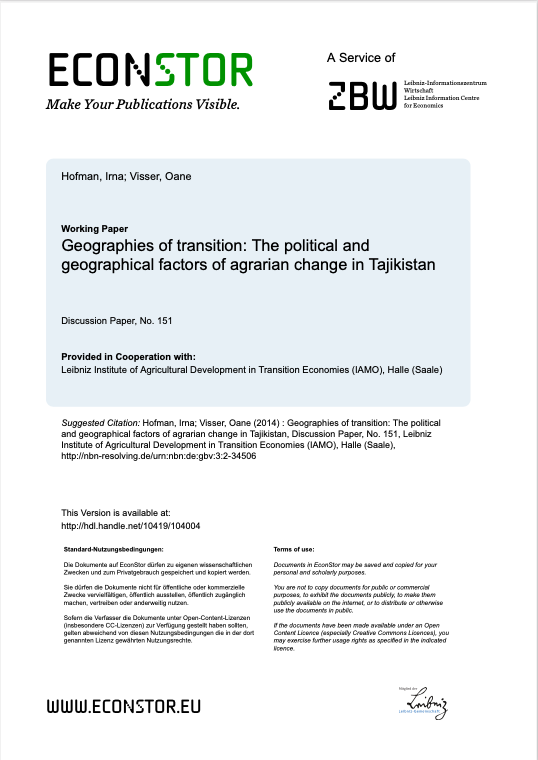Resource information
After more than two decades of agrarian change in Tajikistan, farming structures seem to crystallise. The first signs towards farm individualisation were observed only around 2000, which were the result of significant pressure from outside, when the post-conflict state was highly susceptible to pressure from multilateral institutions. Over time, striking differences in agrarian structures have emerged nation-wide; from highly fragmented, autonomous farms, to elite-controlled large-scale cotton farming. In this paper we analyse and describe the Tajik path of reform, and locate the Tajik case amongst the other reformers in the CIS. We use a political economy and geographical approach to understand the way in which different geographies of transition have emerged in the aftermath of the Soviet collapse. Particular pathways of reform are conditioned by geographical factors, in which in turn, a local political economy comes into play that further shapes the emergence of particular farm models over time.

